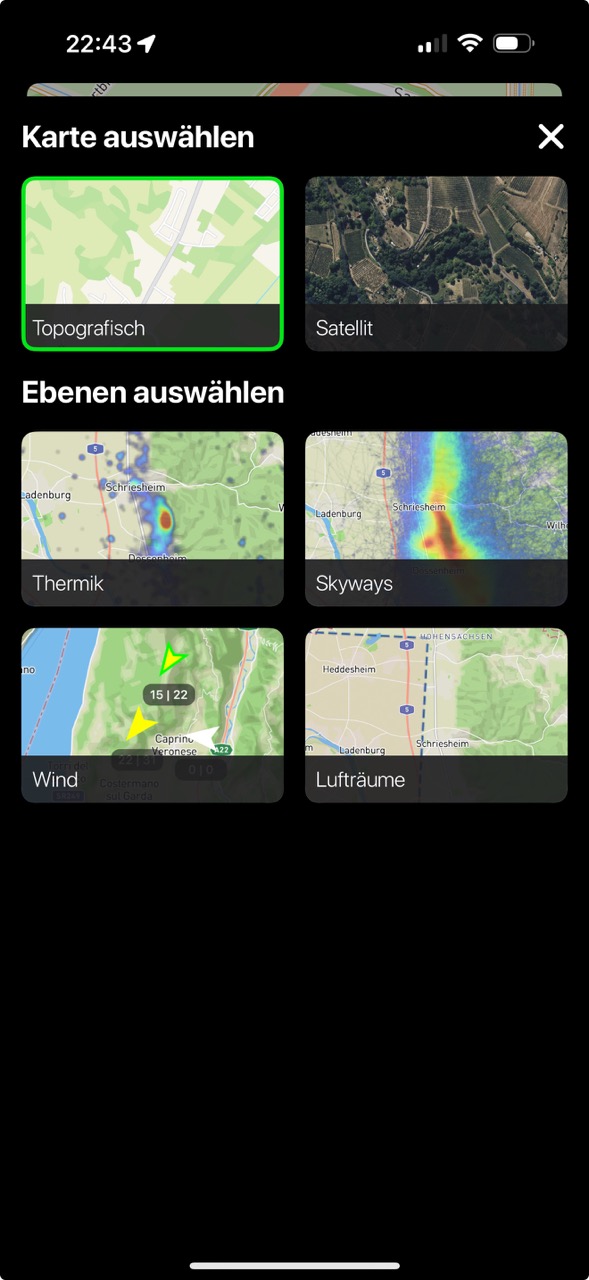

About us
Hello and welcome! My name is Tino. I am the founder of our company Leobalo and the developer of VARIO ONE - the smart variometer app for paragliders, paramotor pilots, hang gliders, glider pilots and helicopter pilots.
As a passionate paraglider pilot, I know the challenges associated with conventional variometers: They are often expensive, complicated to use and one device is usually not enough to be able to use all the functions such as recognising climb, navigation and wind values in flight.
That's why I developed VARIO ONE. With VARIO ONE, you only need one device instead of several: A user-friendly and precise solution directly on your Apple Watch and iPhone - without complicated or expensive additional devices.
VARIO ONE is available in German, English, French, Spanish and Italian. To keep things simple, the following images only show the German text as an example.

The start
How did this come about?
The first air pressure sensor in an iPhone was introduced by Apple with the iPhone 6 (Plus), which was launched on the market in September 2014.
The air pressure sensor made it possible to measure changes in altitude and was installed for fitness tracking applications, e.g. to count the number of stairs climbed. I then developed a first prototype with the iPhone 6 Plus. However, the signalling of ascents compared to my hardware vario from Bräuninger IQ One was so severely delayed that I put the project on hold again.
With the release of the Apple Watch Series 6 in 2020, Apple then changed the air pressure sensor and made a quantum leap in terms of quality and accuracy. That was the point at which I started developing a second prototype with a team of software developers and mathematicians.
I have seen the following advantages of using the Apple Watch instead of a hardware vario:
- Free hardware for those who already own the Apple Watch
- No bracket required on the cockpit or leg
- Very light and always with you. Also perfect for hike & fly
At the same time, I have read the same beliefs and convictions again and again from critics that the development makes no sense:
- An app cannot be as good as a hardware vario
- The air pressure sensors are not accurate enough
- The battery is too small and immediately empty
- The display is not readable in the sun
- The app costs money
That didn't stop us from starting the development. Because if it doesn't work for others, that doesn't mean it won't work for us.
And of course, several problems arose during the ongoing development.
If you are interested in the methodology of how this IT project was implemented, you can listen to my podcast on agile project management: To the Agile Project Management podcast
2023 was the year in which we solved all the problems and received certification from Apple for the following functions on the App Watch app:
- The rise and fall indicator on the display
- The beeps emitted by the watch's loudspeaker
- Calculating and displaying the wind direction and wind speed
This was only possible thanks to the support of several test pilots, countless tests and constant further development. We would also like to take this opportunity to thank Manuel Moreno and Michael Nesler from Profly.
Even though the Apple Watch app works completely without an iPhone, it was important to me that we offer you as a pilot a complete package in which VARIO ONE can also be used on the iPhone. The large display is predestined for planning and navigation with maps as well as subsequent flight analyses and easy uploading of recorded flights (igc files) to the well-known DHV-XC and XContest portals.
I no longer wanted to have to download files from the Hardware Vario to a notebook via USB cable and then upload them from the notebook to the portals. I wanted the upload to the portals to be finished before I even took off my helmet. So we set about developing a digital flight log with GPS recording.
he recording of GPS data is very easy to programme. However, recording and submitting IGC files to the well-known portals so that you are accepted by the FÉDÉRATION AÉRONAUTIQUE INTERNATIONALE is far more complicated and labour-intensive. This certification is necessary in order to see the green light next to "validated" in portals such as DHV-XC and XContest.
If you are interested, you are welcome to take a look at part of the View specification 🙂
Now that it was possible to record igc files with the Apple Watch or iPhone and upload them directly from the flight log with one click, we had laid the foundations.
And then?
In our collaboration with Michael Nesler, we have successfully implemented many of his ideas, particularly in the areas of faster response to thermals, increased safety and innovative solutions.
Faster reactions in thermal conditions
While the pure barometer function was sufficient for me to recognise a climb and sink when flying, Michael wanted to receive feedback from the vario even earlier. That is understandable. At an airspeed of 30 km/h, you fly at 8 metres per second and could have missed the thermal circle by the second. So we started to calculate the climb and descent not only on the basis of changes in air pressure, but also using the values from the built-in acceleration sensor. By combining both sensors, we were able to display air mass changes even earlier and output them via the speakers on the iPhone and Apple Watch.

More security
When it comes to paragliding safety, it is noticeable that every year pilots lose their lives or are seriously injured because they do not fasten their leg straps. In German-speaking countries at least, the 5-point check is therefore part of the paragliding test. However, there are several reasons why this is not carried out in practice before every flight:
- Nervousness before the start
- It has to be done quickly because the strong wind has just died down
- Not anchored in the routine
- "What were the five points?"
To massively increase safety, we have therefore added a checklist before take-off where you can check and tick off the 5 points on your watch or iPhone. Only then can you press the "Start flight" button.
(However, since we as the manufacturer do not want to dictate to anyone how they should deal with the issue of security, the 5-point check can be activated or deactivated in the settings)
The display of the wind direction and calculation of the wind speed also offers me personally a great deal of safety. With every full circle, both are recalculated and displayed as a red travelling arrow in the compass.
But how do you know when you flew the last full circle? It makes a big difference whether it was a minute ago, 30 minutes ago or an hour ago. For this reason, VARIO ONE displays when the last calculation was.
Which manufacturer does the same?


Innovation
The feeling of paragliding is often described as absolute freedom. A cockpit with 3 instruments can counteract this feeling.
For this reason, we have entered into a co-operation with the data goggles manufacturer Engo. With the help of these 40g lightweight "sunglasses", you can view important flight data such as current climb values, altitude and speed without constantly looking down at the cockpit. The combination of Apple Watch + data glasses weighs less than a bar of chocolate!

Bluefly Vario support
For all pilots who own an older iPhone or have doubts that the sensors of the iPhone and the Apple Watch are ideally suited, we have entered into a co-operation with BlueFly Vario. The BlueFly Vario is an extremely precise hardware vario and costs less than 100 euros. However, it does not have a display. In combination with Vario One, it makes an excellent combination device. In addition, the BlueFly Vario is about the size of a matchbox - compact and handy.

Map function
The next major expansion was the installation of a map function, because many paragliders fly with 2 devices:
A vario and a device for displaying maps. We wanted to combine both in one device. Hence the name VARIO ONE. It was also important to me that
- the map function runs absolutely smoothly
- is very intuitive and can be operated with a maximum of 2 clicks
- Wind values, airspaces, thermal charts can be selected and deselected
The result is impressive. I particularly like the integration of Holfuy's wind stations, which show the wind direction and strength in the form of coloured arrows. This allows you to see immediately on the map whether it is worth travelling in the direction of the launch site.
Be surprised what the next expansion stage of this map will be 🙂









Focus on critical points: Where do we stand now?"
| The air pressure sensors are not accurate enough | The sensors in the latest Apple iPhones and Apple Watches are extremely precise. In combination with the acceleration sensor, they detect even the slightest changes in air pressure in real time. If you want to test it yourself, you can try the app for free. If you have an older iPhone, you can buy the BlueFly Vario for 100 euros, connect it to Vario One and use a powerful combination. |
| An app cannot be as good as a hardware vario | An iPhone with a variometer app offers more computing power, internet access and versatile functions compared to classic hardware variometers. Thanks to software updates, touchscreen operation and integration with other apps, it is more customisable and often cheaper. In addition, external sensors such as the BlueFly Vario enable high measurement accuracy. If you already have an iPhone, you can use a powerful and flexible variometer. |
| The battery is too small and immediately empty | After a 3-hour flight, my Apple Watch Ultra still has 50 % battery, my iPhone 15 Pro Max even has 70 %. Of course, the consumption also depends on the display brightness and the individual settings. |
| The display is not readable in the sun | The display of the Apple Watch and iPhone is easy to read both in sunlight and in the shade. You can therefore adjust the design in the settings to "Dark" or "Light" according to your needs. |
| The app costs money | The annual costs ensure continuous updates, support and a high-quality app without advertising or data sales. Server and infrastructure costs must be covered, and the subscription model enables long-term improvements and further developments. Quality has its price - just like good hardware or premium services |
Your advantages at a glance

An app for Apple Watch & iPhoneincluding maintenance and further development
Variometer function with display and acoustic signals for ascent and descent
Wind analysis: Calculation and display of wind direction and speed
Digital flight logbook: Saves flights in IGC format from watch & iPhone, easy upload to XContest & DHV-XC
Cards with overlays: Topographical, satellite, thermal, skyways, airspaces, Holfuy wind values
Additional features: 5-point check, automatic take-off/landing detection, 3 unit systems (imperial, metric, helicopter)
Integration of accessories: ActiveLook glasses from Engo, BlueFly Vario
Flexible display options: Portrait & landscape format, dark or white screen mode
Test now free of charge
Download the app from the Appstore and try it out at your leisure

